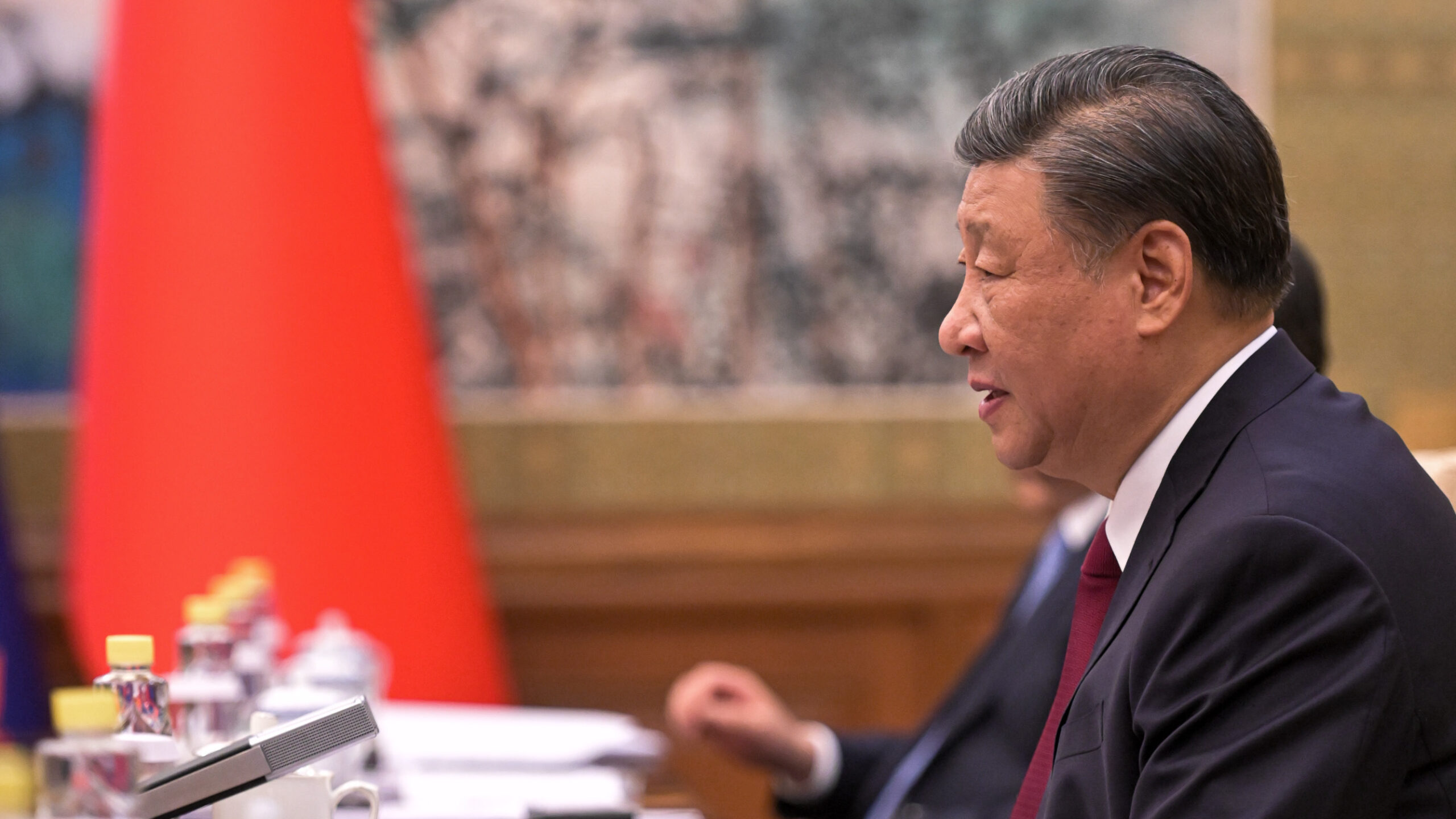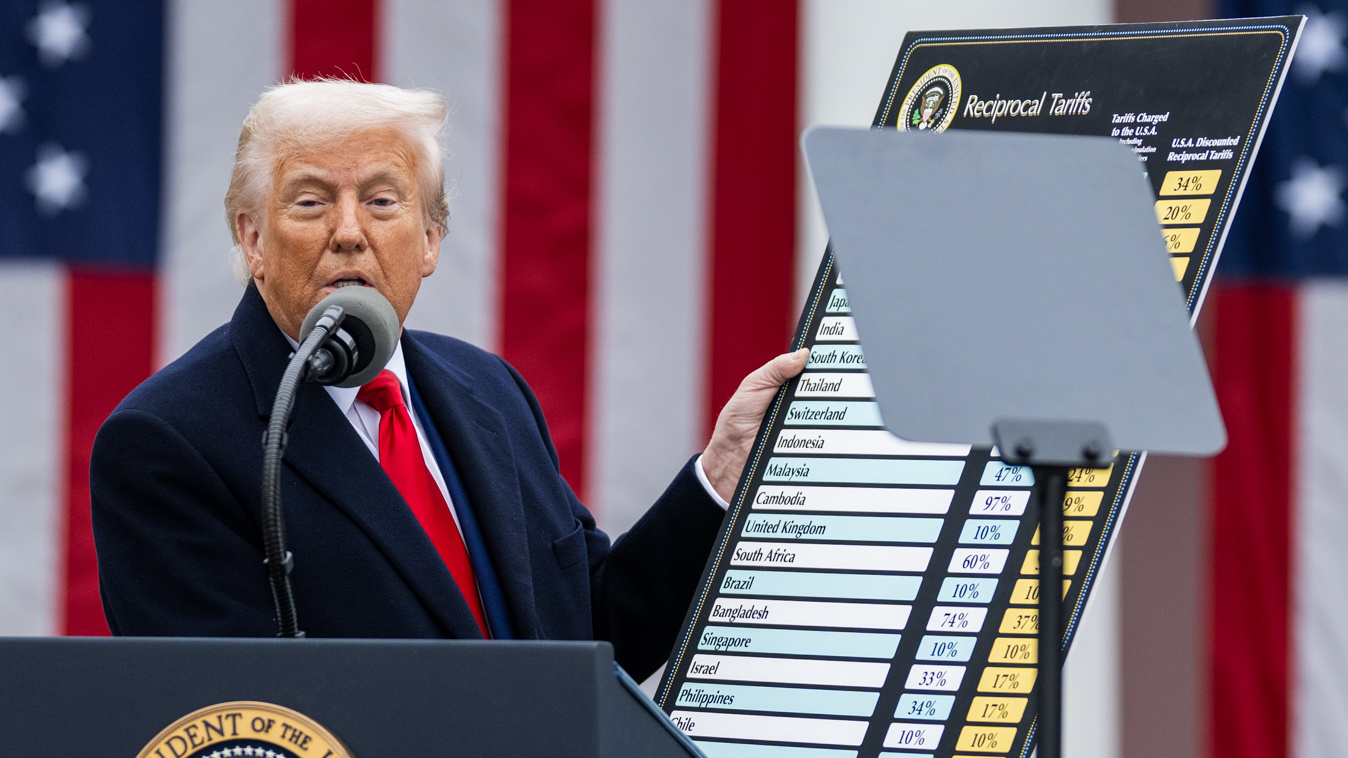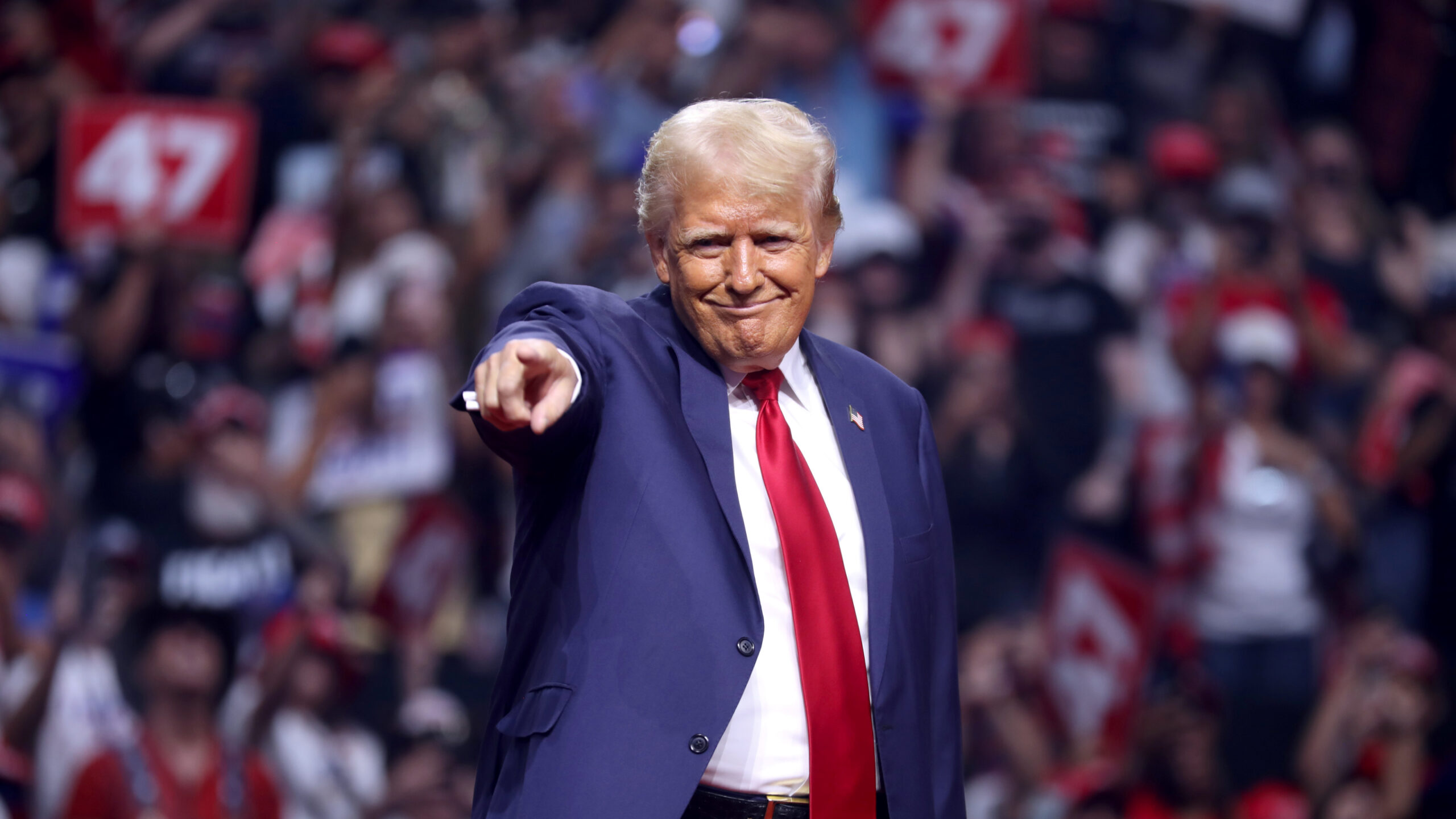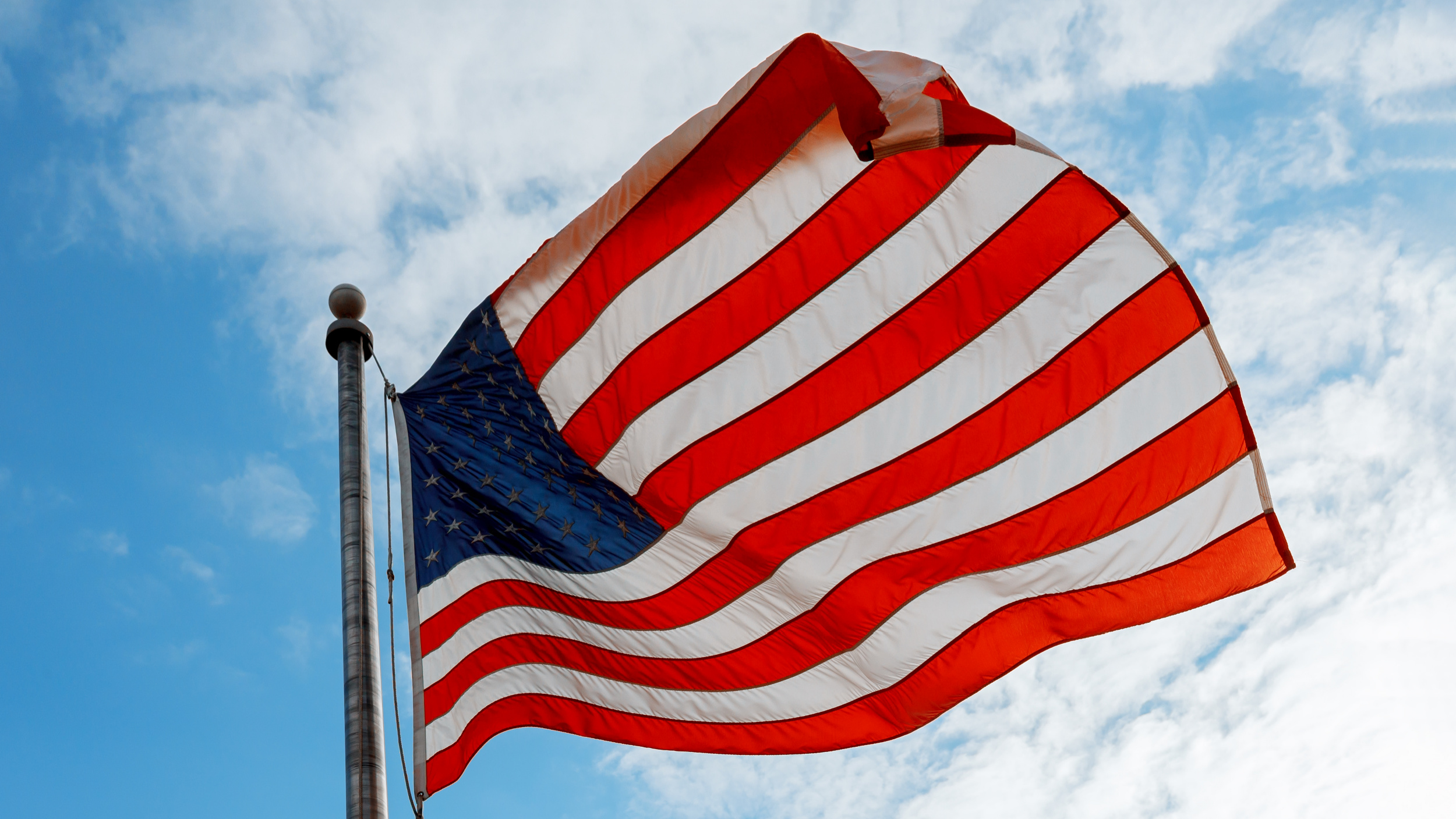The following written testimony was submitted by Michael Stumo, CEO of CPA, to the House Ways and Means Subcommittee on Trade for a hearing titled, “Modernizing Customs Policies to Protect American Workers and Secure Supply Chains,” that was held on May 25, 2023. Read Stumo’s oral testimony here.
Written Testimony of Michael Stumo,
CEO of the Coalition for a Prosperous America
Before the House Ways & Means Subcommittee on Trade
“Modernizing Customs Policies to Protect American Workers and Secure Supply Chains”
May 25, 2023
Dear Members of the Committee:
It is an honor to testify before the Committee on issues that are critical to millions of U.S. domestic producers and the American workers they employ, including members of our organization, the Coalition for a Prosperous America (CPA). CPA is proud to be the only national organization representing exclusively domestic producers across many sectors. We are a bipartisan coalition of manufacturers, farmers, ranchers, and labor organizations that make and grow things in the United States. American jobs, strength, and well-being are built and sustained by growing America’s productive capacity. We value quality employment, national security, and domestic self- sufficiency over cheap consumption. As the Members of this Committee know particularly well, U.S. trade laws and regulations, and the Executive Branch’s enforcement of those laws and regulations, are critical to American manufacturers, producers, and workers.
Introduction
In Fiscal Year 2022, U.S. Customs and Border Protection (CBP) processed more than $3.35 trillion worth of imported goods, an astonishing increase of 19.5% over the prior year.[1] However, $3.35 trillion is an undercounting of imports. Unfortunately, not even CBP knows the total value. That’s due entirely to de minimis. De minimis is one of the three types of “consumption entry”, a term CBP uses for imported merchandise for use in United States commerce. The other two types of consumption entry are “formal entry” (required for merchandise $2,500 and over) and “informal entry” (available for most merchandise valued at less than $2,500). Our $3.35 trillion tally includes formal and informal entry, but not merchandise imported via de minimis.[2]
This is because de minimis is an ungovernable break in our customs controls, where over two million shipments per day enter the United States with little to no scrutiny. Most arrive without digital data, offering only a word or two written on the package to give a hint as to what’s inside. It would take an army to attempt to inspect these shipments.
CBP is flagging the problem in their own muted manner, warning in March 2023: “The overwhelming volume of small packages and lack of actionable data impacts CBP’s ability to identify and interdict high-risk shipments that may contain narcotics, merchandise that poses a risk to public safety, counterfeits, or other contraband.”[3] We know that the majority of de minimis shipments are shipped directly from China and Hong Kong, but after that, it gets murky. The next largest origin country is Canada, but due to the lack of data on de minimis shipments, we do not know the merchandise country of origin for most of those shipments from Canada.
Part I of this testimony lays out the alarming facts as to how de minimis undermines scores of U.S. laws and regulations, not to mention fundamental societal norms. Examining the development of the de minimis fiasco offers a foundation for understanding other negative customs policies that frustrate Congressional expectations in issues such as product safety, narcotics laws, and forced labor laws.
Part II of this testimony moves on to discuss integrity issues in the other entry types.
Why Congress created ‘de minimis’
When goods are brought into the country, the law says the customs officers must record merchandise’s value, catalog its importation by way of an ‘Entry’ form and ‘Entry Summary’, and collect any applicable tariffs and taxes. If customs law did not make an exception to this requirement for trivial items, however, customs officers would be forced to do the assessment for every little souvenir or knick-knack brought in from abroad. Imagine being asked for copies of receipts for the snow-globe and t-shirt you brought back from Paris while standing in the customs line at the airport. Nobody wants that.
This is why, in 1938, Congress created the “De Minimis” rule. “De Minimis” is Latin for “too trivial or minor to merit consideration”. It was added as Section 321 to the Tariff Act of 1930, codified in the U.S. Code at 19 U.S.C. §1321. The law’s opening line states its purpose: “to avoid expense and inconvenience to the Government disproportionate to the amount of revenue that would otherwise be collected.”
Crucially, this is the reason merchandise imported via de minimis is admitted “free of duty and of any tax” – because no entry was assessed to begin with. The assumption was that any revenue gained would not be worth the officer’s time at performing the assessment. This clearly no longer holds true.
To this day, 19 U.S.C. §1321 is titled “Administrative exemptions”. This is yet another clear indicator that Congress never intended de minimis to be a channel for import commerce consisting of millions of packages per day. And it is why it is appropriately called a “loophole”, one that was enabled not by Congress but by regulatory rule-making, as will be discussed below.
The Three Different Types of De Minimis Entry
Congress created three separate types of de minimis entry covering two different scenarios, and a catch all. They are still enumerated in the law today:
- 19 U.S.C. §1321(a)(2)(A): “Bona fide gifts” shipped from abroad;
- 19 U.S.C. §1321(a)(2)(B): “articles accompanying” travelers for “household use”; and
- 19 U.S.C. §1321(a)(2)(C): “any other case”.
Originally, in 1938, Congress assigned a $5 threshold for bona fide gifts and personal effects travelers brought with them, and a $1 de minimis for “any other case”. “Any other case”, (a)(2)(C), was never meant to be a channel of any meaningful volume of goods. Yet today, the “anything else” category is what is being used to waive through millions of shipments per day! Having been lightly touched since its 1938 inception, as of 1994, the de minimis thresholds stood at $50 for bona fide gifts from abroad, $25 for souvenirs brought back, and just $5 for anything else.
1994: Birth of the De Minimis Loophole via Customs Rule-making
NAFTA went into effect on January 1, 1994, and was a high-profile legislative event. It thus largely overshadowed another monumental piece of legislation that was passed alongside NAFTA: the Customs Modernization Act, or “Mod Act.” The Mod Act increased the bona fide gift threshold from $50 to $100; “accompanying articles” from $25 to $200 for; and a tremendous increase from $5 to $200 for de minimis. In the legislative record, however, Congress focused on the first two categories, but not the “in any other case” increase to $200 alongside the “accompanying articles” increase.
Besides the raise from $5 to $200, the other transformative change happened not from the 1994 Mod Act, but when U.S. Customs service drafted their subsequent implementing regulations that allowed any “consignee” to import merchandise, without even the use of a customs broker. The National Customs Brokers and Forwarders Association of America (“NCBFAA”), founded in 1897, is the trade association representing the customs brokers’ profession and was very involved in the development of the Mod Act. It is telling that an organization so involved in the legislative process was stunned by the subsequent interim regulations.[4]
Customs brokers were alarmed because the norm around the world was that only owners, purchasers, or a customs broker hired by the owner or purchaser could do an importation. This is the norm because importers are expected to be knowledgeable about the merchandise they are importing. They are expected to be able to answer customs officers’ questions. This norm is U.S. law, 19 U.S.C. §1484, except for de minimis. Allowing “consignees” to perform import entries meant that parcel carriers (e.g. mail carriers and express couriers) could perform imports despite having no knowledge of the merchandise beyond what is written on the declaration.
The NCBFAA filed an emergency lawsuit, claiming that the U.S. Customs Service was violating statute with these regulations. Multiple reasons were cited, but importantly from a policy perspective was the fact that the law (19 U.S.C. §1484) mandated that “only an owner, purchase, or licensed broker may make entry of merchandise.”[5] Doing away with this requirement for de minimis shipments would lead to a host of grave issues.
NCBFAA cautioned that “Customs is abrogating its responsibility to enforce certain laws and is providing opportunities for their violation.”[6] While NCBFAA’s lawsuit was against the U.S. Customs Service, the express shippers joined as defendant-intervenors. The federal court that heard the challenge understood the consequential nature of the case, writing “With regard to [the express shippers], resolution of this matter will define their frontier in this industry.”[7]
NCBFAA warned the court and the country as follows:
Specifically, plaintiff points out … the proposed regulations allow entry of shipments valued at amounts up to $200 through summary manifest information, that is, without any requirement of a Harmonized Tariff Schedule of the United States (HTSUS) subheading number, and exempt these shipments from the requirement of filing an entry summary. Plaintiff contends that this lax entry procedure will create difficulties for Customs relative to the enforcement of visa requirements for apparel, intellectual property rights for patents and copyrights, and antidumping and counter-vailing duty orders. Plaintiff contends that the proposed changes will hinder the Food and Drug Administration’s enforcement capabilities as well.[8]
Unfortunately, the court found that the Secretary of the Treasury had broad rule-making authority governing de minimis shipments, and thus ruled against the NCBFAA. The above prediction is precisely what has transpired.
The Final Rule Docket Also Accurately Predicted the Many Calamities of De Minimis
Following the lawsuit, on April 14, 1995, the Customs Service published its Final Rule (60 FR 18983) in the Federal Register, and here too, the docket was filled with commentators who accurately predicted the myriad of problems.[9]
FDA Abandons Oversight Role for Food, Cosmetics, and More
Just as the NCBFAA predicted, FDA concluded that it should simply abandon oversight for various imports it is supposed to monitor, including room-temperature food stored in air-tight containers and cosmetics.[10] The FDA’s dereliction of duty continues to this day for millions of shipments from around the world, most of which originate from China.
2015: De Minimis Rises from $200 to $800 without debate
Express shippers and e-commerce platforms were able to accomplish a legislative coup in 2015, when they successfully raised the de minimis threshold from $200 to $800. This was a provision tucked into the Trade Facilitation and Trade Enforcement Act of 2015 (“TFTEA”). TFTEA did include a number of improvements to our anti-dumping and countervailing duty laws, and thus earned support from businesses and groups who typically favor strong trade enforcement. Unfortunately, as in 1994, this change from $200 to $800 did not face Congressional scrutiny, and was obscured by other customs issues. Congress cannot let this happen again as it takes up customs policy.
A note about de minimis monetary thresholds
Because de minimis is now associated with e-commerce, it is often erroneously assumed that the $800 limit refers to a U.S. retail price. But because de minimis was never meant to be an avenue of commerce, the U.S. retail price is actually irrelevant in determining whether the $800 threshold has been met. Instead, per 19 U.S.C. § 1321(a)(2), the $800 is the “fair retail value in the country of shipment” – not of America.
“Consignee Entry” Combined with an $800 De Minimis threshold transformed the nature of international trade and e-commerce in America.
Under the traditional trade paradigm, importers were typically wholesalers or large retailers, importing particular products by the container-load and then distributing those products domestically. Essentially, merchandise was almost always shipped in bulk. This made regulating and policing import commerce fairly straight forward. Conversely, with de minimis’ consignee entry, that same shipping container may now have as many as 5,000 individual shipments, all small packages going to individual Americans.
China’s SHEIN and Temu are now the most downloaded e-commerce apps in the United States, and their operations are almost entirely outside the country. Mailbox sized shipments are sent directly from abroad, and imported via de minimis entry with little documentation. SHEIN is now larger than The Gap, and the United States misses out not only on revenue from duties, but also the over twenty-percent corporate income tax rate The Gap is subject to as they are displaced by SHEIN. This is extremely problematic for CBP, because they face a comparable work load whether a bill of lading represents an entire shipping container or one individual package.
This is how Laurie Dempsey, CBP’s Director of Intellectual Property Rights, described the situation in 2019:
TFTEA’s change to the de minimis value, however, caused a dramatic increase in the volume of shipments making use of de minimis entry procedures. These procedures provide fewer data elements for CBP to use to effectively identify and target high-risk shipments, including for narcotics, counter-proliferation, and health and safety risks. The dramatic increase in shipments has left CBP with less information about a greater number of shipments.
The increasing use of new and changing industry business models, particularly in the e-commerce environment, further exacerbates this information gap. Entities receiving goods in the United States, which CBP previously believed to have limited financial interest in a shipment, are now critical players with increasing influence in how low-value goods move around the world.
This shift in the roles of parties to the transaction has not been accompanied by a change in responsibilities from a regulatory or policy perspective. Moreover, the advent of just-in-time delivery, along with contract manufacturing and online payment processing, has given merchants more flexibility and greater access to markets once limited by location. Free trade agreements have also allowed new routes for goods from all over the world to cross borders more easily.
CBP is concerned that the proliferation of new and changing business models, particularly in the e-commerce environment, and the increase in small packages, is permitting bad actors to operate with relative impunity.[11] (Emphasis added)
China is the biggest user of de minimis, and most counterfeits are from China and arrive to the United States via Express Consignment and International Mail
The most recent data for where de minimis shipments originated from (not the same as where the merchandise is from) is for CBP’s FY2021. In that year, 771.4 million de minimis shipments were made. 475 million, or 62.5%, were shipped directly from China and Hong Kong.[12]
According to CBP: “Over 90 percent of all intellectual property seizures occur in the international mail and express environments. The People’s Republic of China (mainland China and Hong Kong) remained the primary source economy for seized counterfeit and pirated goods, accounting for 83 percent of all IPR seizures and 92 percent of the estimated MSRP value of all IPR seizures.[13]”
Last month, CBP’s Executive Director of the Trade Policy and Programs Directorate, said in an interview with International Trade Today that “De Minimis is not a loophole.”[14] Perhaps that is true from the point of view of Customs regulations. Merriam-Webster defines “loophole” as “an ambiguity or omission in the text through which the intent of a statute, contract, or obligation may be evaded.”
Does the reality of millions of shipments per day unaccounted for in our trade statistics and causing CBP to say the agency is “overwhelmed” sound like something that meant to happen when legislated under “Administrative exemptions” in 19 U.S.C. §1321? No. It sounds like the intent of the Administrative Exemption has been evaded, which fits the definition of statutory loophole. CBP staff should also take note that logistics companies in Canada and Mexico actively market de minims as a “loophole” vendors should exploit.[15]
Free Trade Zone Operators Have Advocated Classic Race-to-the-Bottom
One limitation on de minimis eligibility is that the $800 threshold applies to “articles imported by one person on one day”. CBP has held, correctly, that the statute does not authorize de minimis importations to originate from within a Free Trade Zone (“FTZ”) inside the United States.
As the use of de minimis has grown drastically, operators of FTZ warehouses have begun complaining that they are losing business to bonded warehouse operators in Canada and Mexico, who are able to originate de minimis shipments into the United States. Merchandise from China can be sent from China to these Canadian and Mexican warehouses, stored in bond (thus never being formally entered into Canada or Mexico), and shipped rapidly to U.S. consumers when an e-commerce order is placed.
FTZ operators are rightly upset about losing business to this loophole. But extending them the ability to originate de minimis shipments is classic ‘race to the bottom’ trade policy. If we do that, then every Amazon fulfillment warehouse across America will demand the same treatment out of fairness. And if we grant it to them, every big box store will want the same. We will have eviscerated the customs integrity of our nation.
Digital Data Cannot Save De Minimis Because the Declarations are made by Foreign, Judgement-Proof Shippers Without the Use of Customs Brokers
Since 2018 there have been efforts to promote “digital data” for de minimis shipments. And currently, almost half of all de minimis shipments provide some limited data through two CBP pilot programs. However, CBP staff have now revealed that this data is essentially worthless.[16] One of the pilot programs — Type 86 entry — allows overseas vendors to “self-file” package data, but these vendors are typically outside U.S. jurisdiction. The other program—Section 321 e-commerce data pilot—allows Amazon and other large e-commerce retailers to input webpage listings instead of the actual data, especially HTS numbers, expected of normal businesses.
CBP officials are reporting that, even with these enhanced data collection procedures, 25 percent of packages still contain faulty labeling.[17] A mail carrier or express shipper can’t answer anything about a package’s contents beyond what’s written on the shipping label. Customs officers have only the declarations, and nothing more. Officers are forced to trust that the foreign vendor accurately reported their declarations.
And there is no accountability for bad data. With Type 86, foreign businesses aren’t accountable for misclassifying. And with the 321 e-commerce pilot, CBP does not even ask for HTS numbers. But even if we had perfect HTS numbers – which will never happen so long as customs brokers aren’t required – there would still be no way to police millions of daily shipments. CBP staff also revealed that another 25 percent of de minimis shipments with digital data evaded inspection even when there was a specific hold order from CBP.[18]
The Consumer Products Safety Commission is not surprised by the data pilot failures. The Commission sounded the alarm over its ability to fulfill its mandate in regard to de minimis shipments at the outset, stating in its e-Commerce assessment that the Commission “will benefit little from the [Type 86] test and will continue to experience the data and targeting challenges described above.”[19] There is simply no way to police millions of daily small package shipments direct from overseas vendors to American consumers.
Think of children’s toys. Before de minimis, wholesalers or large retailers would order toys in bulk. When a shipping container arrives full of a particular toy, federal inspectors can take one for testing. If the sample contains unacceptable lead levels, the entire shipment will be rejected. However, such scrutiny is impossible for millions of individual, direct shipments from overseas vendors mailed direct to Americans’ homes.
Forced labor cotton from China has become a significant issue for this Congress and the last. And while it’s conceivable to hold big importers like The Gap that import in bulk accountable, there is zero chance of policing individual shipments of t-shirts and socks that go from overseas warehouses directly to Americans’ mailboxes.
Failing to fix de minimis means giving up on all of our societal norms, from product safety standards to forced labor bans, and perpetuates an unfair advantage that primarily helps Chinese vendors at the expense of tax-paying American businesses.
CBP’s Office of Trade Released False Statistics on De Minimis, and Refused to Correct
In October 2022, for the first time, CBP’s Office of Trade purported to show the “total value” of de minimis shipments, covering its fiscal years 2018 through 2021. This was a surprise to my organization, as we knew that no one was manually tabulating the asserted values written on the side of hundreds of millions of de minimis shipments each year. So how could CBP know the “total value?”
After confirming with a source at CBP that the figures CBP’s Office of Trade was listing were only the total value of de minimis shipments which had electronic filings, CPA demanded a correction.[20] Regrettably, CBP’s Office of Trade did not respond.
CBP ‘Targeting’ Programs Should Not Be Confused with CBP Entry Forms
In the same interview where CBP’s Deputy Director Lord said that de minimis was “not a loophole”, the Director said the following: “There’s a misconception that we don’t target or screen de minimis – it’s not true.”[21] This assertion obfuscates the reality that de minimis shipments are largely a black box as reliable data does not exist.
CBP’s targeting systems, such as e-Manifests and the Air Cargo Advance Screening (ACAS) system, were born of the Trade Act of 2002, and are not designed to catalog imports. CBP Entry Summaries, which include HTS numbers and provide product-level information for a financial transaction between a seller and a buyer, are what is used to enforce our myriad of laws governing products and upholding policies such as our ban on forced labor goods.
An Entry Summary (CBP Form 7501) is the essential document for cataloging the import of a product. Of the three types of importations under U.S. customs law, it is required for all imports except de minimis.[22]
Other Countries Do Not Want Anything Resembling U.S. De Minimis Policy
For decades, since the original creation of the de minimis loophole in 1994, supporters of consignee-entry have advocated for other countries to adopt U.S.-style de minimis lawlessness, often with the support of past U.S. trade representatives. Every other country has fiercely resisted. Canada has arguably been the biggest target of this advocacy. Express shippers enjoyed some success in the USMCA negotiation, but even here, where Canada had so much to lose, they only raised their version of de minimis (no duties assessed) to $150CAD, a far cry from our $800 USD.
Only looking at the monetary threshold betrays how little of U.S.-style de minimis Canada has adopted, however. Notably, following passage of USMCA, Canada only extended de minimis privileges to contract carriers (not the mail). Canada also required that de minimis shipments had to originate from U.S. or Mexican commerce (not anywhere in the world), and that businesses could not use de minimis for imports, only orders placed by individual consumers were eligible.[23]
Europe also abolished de minimis in July 2021 as it relates to the EU’s VAT, citing principles of fundamental fairness.
Even if perfect, accurate, digital data for De Minimis shipments was obtainable, and even if CBP had the hundreds of thousands of officers needed to scrutinize millions of small packages per day, we would still be left with a fundamental unfairness.
Why should a brick-and-mortar retailer have to pay the duty on all its imported merchandise, but not an e-commerce platform? If AutoZone or Costco wants to import tires to sell in-store or online, they must pay the duty, but if a consumer wants to order tires from Canadian Tire (not present in the United States), they can arrange for those tires to be imported and delivered free of duty? How does this make any sense?
It’s a repeat of the unjustness that perpetuated for far too long, as e-commerce websites were not required to collect state sales tax. Congress eventually fixed that, too, despite years of warnings. It’s time to fix de minimis as well.
Part II: Formal Entry and Other Issues
Shipping Manifest Transparency: The United States should match Mexico when it comes to shipment transparency. Regrettably, only ocean vessel manifests are currently subject to disclosure by CBP, but land and air entries remain entirely confidential. And even ocean vessel manifests are increasingly hidden, as businesses request – and seemingly automatically receive – confidentiality treatment from CBP. This is happening even as the burden of policing imports for compliance with laws increasingly falls on U.S. industry. Major manufacturers have reported to CPA that they have found Mexican shipping data to be essential in policing trade remedy orders for circumvention, due to heightened confidentiality treatments in the United States.
The Commercial Customs Operations Advisory Committee (COAC): COAC was created by Section 109 of the Trade Facilitation and Trade Enforcement Act of 2015. The COAC is not a standard industry advisory group that focuses on technical consultations. CBP has that, known as the Trade Support Network (TSN) which “provides a forum for the trade community to provide recommendations and input on customs automation and modernization.”[24]
Rather, the COAC acts as a vehicle by which the offshoring industry captures and obstructs CBP’s trade enforcement agenda outside the public eye. For example, an official COAC Recommendation published on September 14, 2022, stated that “COAC recommends that CBP share with the E-commerce Task Force the initial HTSUS waiver proposal draft, compliance process, and/or additional data waiver prior to its finalization, and prior to any notice or release to the public.”[25]
The COAC itself has quarterly public meetings, but these public meetings are performative only. CPA had to protest after finding that COAC was skipping even the scheduled time for public comment at these highly scripted meetings. The lack of interest or consideration for public input makes sense, as the actual work and deliberation of the COAC happens entirely outside of the meetings, at the Subcommittee level and below.
Subcommittees, in turn, have Working Groups, better understood as secret clubs. Assignments to working groups are confidential. No one, except the individual COAC Members, is allowed to know who is participating in a Working Group outside their own. All members are required to sign Non-Disclosure Agreements (NDAs) with CBP, so a representative on a Working Group does not even have the liberty to confer with colleagues about their work. There are no rules to the meetings within a Working Group; the COAC member leading the group is free to disregard anything that comes out of the Working Group when they work with fellow members at the Subcommittee Level to develop COAC Recommendations. In this fashion the COAC undermines the moralities guarded by constitutional due process requirements in administrative rule-making.
[1] https://www.cbp.gov/newsroom/stats/trade
[2] https://www.wsj.com/articles/the-tiny-loophole-that-understates-the-trade-deficit-with-china-11655458201?mod=mhp
[3] https://www.cbp.gov/sites/default/files/assets/documents/2023-Mar/NGF%20E-Commerce%20Task%20Issue%20Paper%20March%202023.pdf
[4] National Customs Brokers & Forwarders Ass’n of America, Inc. v. United States, 861 F.Supp. 121, 125 (1994)
[5] Id., 128.
[6] Id.
[7] Id., 126.
[8] Id., 129.
[9] 60 FR 18983, https://www.federalregister.gov/documents/1994/06/13/94-14255/express-consignments-formal-and-informal-entries-of-merchandise-administrative-exemptions
[10] FDA CSMS #94-001260, “FDA Low Value Shipments”)
[11] U.S. Department of Homeland Security, “Privacy Impact Assessment for the E-Commerce “Section 321” Data Pilot”, DHS/CBP/PIA-059 (September 26, 2019), page 2, available at https://www.dhs.gov/sites/default/files/publications/privacy-pia-cbp-section321-059-september2019.pdf
[12] https://www.cbp.gov/sites/default/files/assets/documents/2022-Oct/FY2018-2021_De%20Minimis%20Statistics%20update.pdf
[13] CBP Media Release, “$115K of Counterfeit Items Seized by CBP Officers in Louisville” (August 19, 2020), available at https://www.cbp.gov/newsroom/local-media-release/115k-counterfeit-items-seized-cbp-officers-louisville
[14] Mara Lee, “CBP Trade Policy Director: de Minimis is No Loophole”, Int’l Trade Today, (April 24, 2023), available at https://internationaltradetoday.com/reference/2304240038?BC=bc_6468f8b429f40
[15] https://www.stalcofulfillment.com/section-321/
[16] https://internationaltradetoday.com/news/2023/04/17/Type-86-Test-Revealing-Compliance-Weaknesses-in-Small-Packages-2304170052
[17] Id.
[18] Id.
[19] https://www.cpsc.gov/s3fs-public/CPSC-e-Commerce-Assessment-Report.pdf
[20] Press Release: “Coalition for a Prosperous America Urges Customs to Publicly Correct False Statistics on De Minimis”, November 2, 2022, available at https://prosperousamerica.org/cpa-urges-customs-to-publicly-correct-false-statistics-on-de-minimis-shipments/
[21] Mara Lee, “CBP Trade Policy Director: de Minimis is No Loophole”, Int’l Trade Today, (April 24, 2023), available at https://internationaltradetoday.com/reference/2304240038?BC=bc_6468f8b429f40
[22] “Because a shipper does not submit entry data through CBP’s automated portal when importing under the de minimis exception, information regarding these products is not collected and available for review for CBP enforcement purposes or other agencies with an interest in the information.” Livingston International, “The Unintended Consequences of Raising the De Minimis Level”, https://www.livingstonintl.com/livingston-content/uploads/2018/04/NAFTA-De-Minimis_FINAL-November-13-2017.pdf
[23] https://www.cbsa-asfc.gc.ca/publications/dm-md/d8/d8-2-16-eng.html
[24] https://www.cbp.gov/trade/ace/trade-support-network
[25] COAC Next Generation Facilitation Subcommittee, https://www.cbp.gov/sites/default/files/assets/documents/2022-Sep/22_0901_ngf-e-commerce-recommendation.pdf













